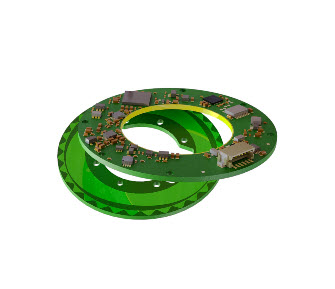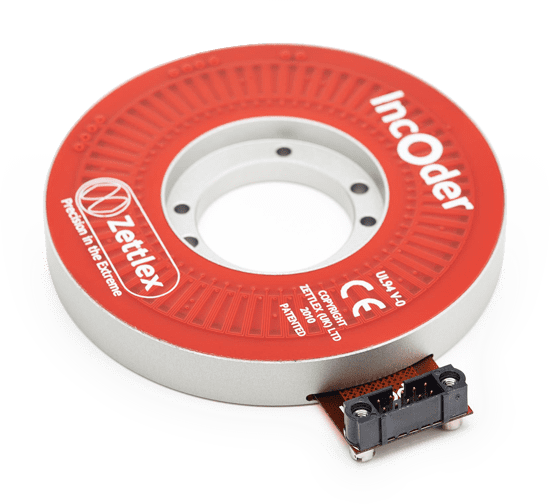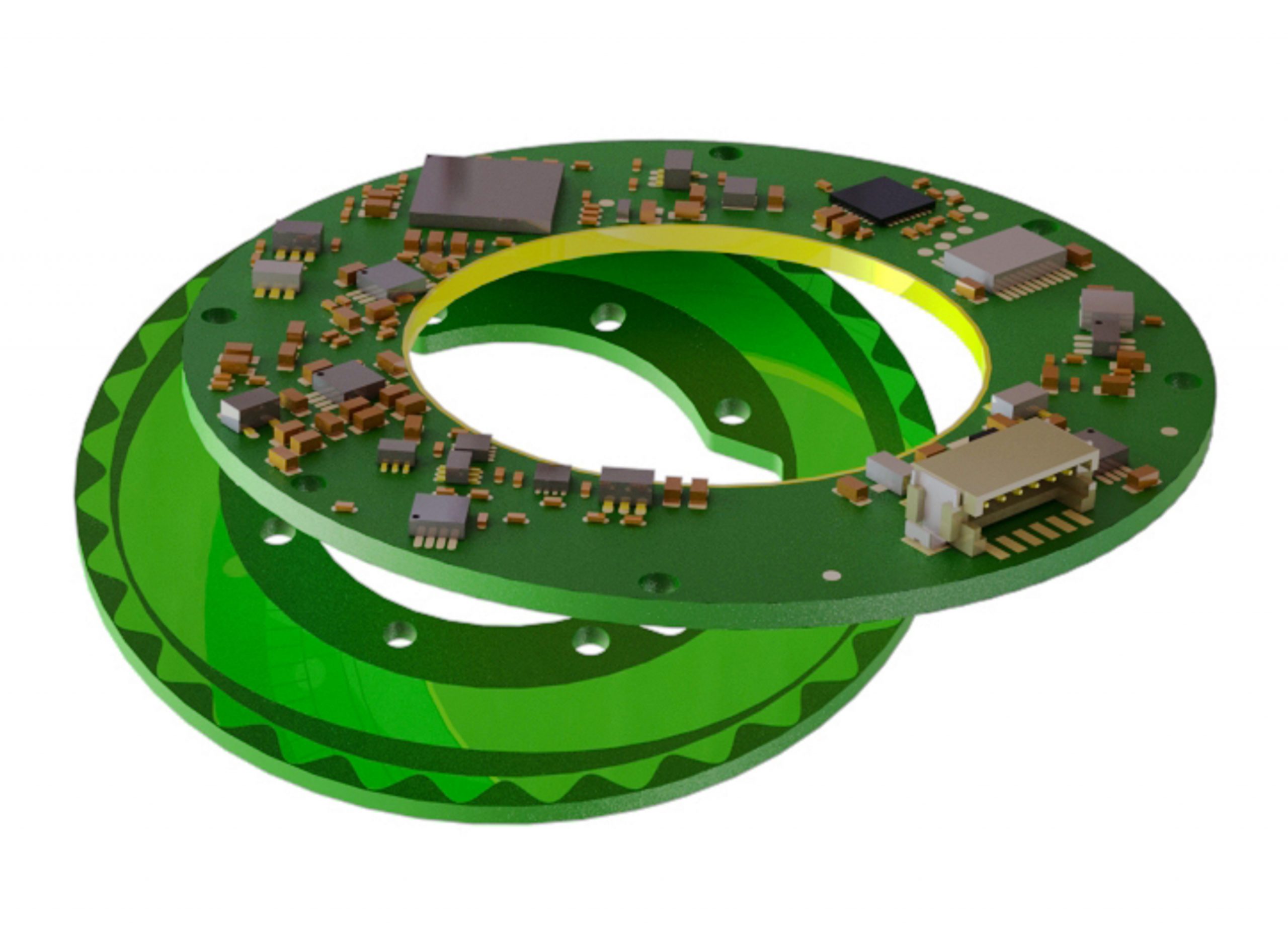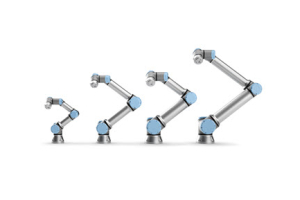
In the realm of motion control and position feedback, encoders are pivotal. Two prominent types in today's industry are the capacitive and inductive encoders.
This paper takes a closer look at each of these, providing insights for those seeking to choose between them for specific applications.
What is a Capacitive Encoder?
A capacitive encoder works based on the principle of varying capacitance. Essentially, these encoders have a rotor and stator, separated by a dielectric.
As the rotor moves, the overlapping area between the two changes, thereby altering the capacitance. This capacitance change can be measured and translated into position information.
Capacitive Encoder Key components:
- Rotor:
- Function: The rotor in a capacitive encoder is typically a rotating disc that moves in response to the motor or device's movement. Its movement changes the overlap between itself and the stator, thus altering the capacitance.
- Material: The rotor is usually made of a conductive material such as copper or aluminum. In some designs, it may also have patterns or slots to create differential areas of capacitance.
- Positioning: The rotor is usually positioned close to the stator, separated by a thin dielectric, to maximize the change in capacitance with movement.
- Stator:
- Function: The stator is the stationary part of the encoder. It interacts with the rotor, and together they determine the capacitance which can be measured to deduce position or movement.
- Material: Like the rotor, the stator is made of conductive materials. It may also be patterned to optimize the capacitance changes.
- Interactivity: The stator often has electrodes attached to it, which measure the change in capacitance. These electrodes feed the information to the encoder's electronics.
Advantages and Disadvantages of Capacitive Encoders:
- Advantages:
- Compact design: Capacitive encoders can be made in smaller sizes, ideal for applications with space constraints.
- Cost-effective: The production costs for capacitive encoders are typically lower, making them an economical choice.
- High resolution: They can provide very high-resolution feedback, particularly over short distances.
- Minimal wear: Since they work on the principle of capacitance without any physical contact, wear and tear are minimized.
- Disadvantages:
- Environmental susceptibility: Capacitive encoders can be affected by contaminants such as dust and moisture, which may alter the capacitance and lead to erroneous readings.
- Interference issues: These encoders can be sensitive to electromagnetic interference.
- Temperature sensitivity: Variations in temperature can lead to changes in the dielectric constant, potentially affecting the encoder's accuracy.
Capacitive Encoder Industries and Applications:
The high resolution of capacitive encoders makes them excellent for applications that require precise positioning. Their lightweight and compact design is beneficial in applications where space and weight are critical factors.
- Consumer Electronics: Devices like computer mice and trackpads often use capacitive encoders for position tracking.
- Medical Devices: Precision equipment, like certain imaging devices or micromanipulation tools, can utilize capacitive encoders for fine movement tracking.
- Semiconductor Manufacturing: Capacitive encoders can be found in the precise machinery used to produce and test semiconductor devices.
- Robotics: For robots that require lightweight components and operate in controlled environments, capacitive encoders are an attractive choice.
- Laboratory Equipment: Precision instruments, especially those used in micro-scale operations, may use capacitive encoders to track movement.
What is an Inductive Encoder?
Inductive encoders, often called an inductosyn, employ electromagnetic induction to derive position information. They consist of a primary coil or winding, which generates a magnetic field, and secondary windings that pick up this field.
The voltage induced in the secondary windings is a function of their position relative to the primary coil, allowing the position to be determined.


Inductive Encoder Key Components:
- Primary Coil/Winding:
- Function: This is where the magnetic field originates. When a current is passed through the primary coil, it generates a magnetic field which induces a voltage in the secondary windings.
- Material: Typically made of wound copper wire. The coil's number of turns, wire thickness, and quality can impact the encoder's performance.
- Design Variations: The shape and positioning of the primary coil can differ across encoder designs. Some may use a linear coil, while others could use a circular or even a more intricate pattern.
- Secondary Windings:Function: These pick up the magnetic field generated by the primary coil. The voltage induced in these windings varies based on their relative position to the primary coil, allowing the determination of position.
- Material: Like the primary coil, these are often made of wound copper wire.
- Interactivity: As the encoder's position changes, the relationship between the primary coil and secondary windings changes, altering the induced voltage. This change is measured and decoded to provide position feedback.
- Patterns: To enhance sensitivity and accuracy, the secondary windings might be arranged in particular patterns or shapes, optimized for the specific encoder design.
Advantages and Disadvantages of Inductive Encoders:
- Advantages:
- Durability: These encoders are often rugged, resistant to harsh environmental factors such as dust, moisture, and temperature variations.
- High accuracy: They provide precise position information and tend to have lower drift over time.
- Interference resistance: Inductive encoders are less susceptible to electromagnetic interference compared to capacitive encoders.
- Long lifespan: Due to their robust nature, they tend to last longer in challenging industrial environments.
- Disadvantages:
- Complexity: The electronics and circuitry associated with inductive encoders can be more intricate than capacitive ones, potentially increasing costs.
- Size: Typically, inductive encoders might be bulkier than their capacitive counterparts.
- Power consumption: These encoders may require more power to operate effectively.
Inductive Encoder Industries and Applications:
Inductive encoders tend to be rugged and can handle extreme conditions, from dust and moisture to wide temperature variations. Their resistance to electromagnetic interference is crucial in industries where heavy machinery or other sources might generate such interference. The long lifespan and durability of inductive encoders reduce the need for frequent maintenance or replacements, which is a boon in industries where downtime can be costly.
- Heavy Industry: Machinery in environments like mining, construction, or steel production, which are exposed to harsh conditions, can benefit from the ruggedness of inductive encoders.
- Aerospace: Inductive encoders, particularly resolvers, are used in aircraft systems because of their reliability and resistance to environmental factors.
- Automotive: Position feedback in steering systems, engine control units, and other vital systems can use inductive encoders because of their durability and long lifespan.
- Military: Equipment designed for the military, from tanks to radar systems, often requires encoders that can withstand challenging conditions. Inductive encoders fit this bill.
- Oil and Gas: Drilling equipment and machinery operating in offshore platforms, where conditions are tough and reliability is paramount, often employ inductive encoders.
Summation
Capacitive and inductive encoders both play pivotal roles in the realm of motion control and position feedback, but they differ significantly in terms of design and optimal application areas. Capacitive encoders, operating on the principle of varying capacitance, are known for their high resolution and compactness. This makes them particularly adept for precision tasks in controlled environments, such as in semiconductor manufacturing or medical equipment. Their lightweight and compact nature makes them ideal for applications where space is at a premium and the environment is relatively clean and free from interference.
On the other hand, Inductive Encoders function through electromagnetic induction, granting them a ruggedness that capacitive encoders might lack. Industries that operate in harsh or unpredictable environments, such as heavy machinery in construction, aerospace systems, or drilling equipment in the oil and gas sector, would favor inductive encoders for their ability to withstand dust, moisture, temperature variations, and electromagnetic interference. Their robust nature ensures reliability even when exposed to external stressors.
In a scenario where a robotics company is designing a lightweight drone for indoor navigation and mapping in a controlled setting, a capacitive encoder might be the preferred choice due to its precision and compact form factor. Conversely, if an automotive company is developing a steering system for heavy-duty vehicles meant to traverse rough terrains, an inductive encoder would likely be the go-to, given its resilience and ability to consistently deliver accurate feedback despite external challenges.
The choice between the two encoder types is often a balance between precision, size considerations, and environmental robustness, and understanding the unique strengths of each is key to making an informed decision.
For more information, view our Capacitive Encoder Product Page.






